

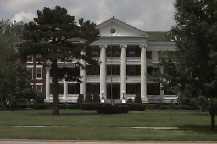 When Mary J. Jones died on July 12, 1909, she left provisions in her will to build a home "for the benefit of old ladies" residing in Knoxville and Knox County. A trust fund of $200,000 was set aside to operate the home. The home, which occupies the entire 400 block of East Main Street in Knoxville, has served as a retirement home for
women since it opened in 1912.
When Mary J. Jones died on July 12, 1909, she left provisions in her will to build a home "for the benefit of old ladies" residing in Knoxville and Knox County. A trust fund of $200,000 was set aside to operate the home. The home, which occupies the entire 400 block of East Main Street in Knoxville, has served as a retirement home for
women since it opened in 1912.
Jones had named three trustees to construct the home at a cost not to exceed $50,000. The terms of her will stated, "Applicants for admission to said home, who in the judgment of my said Trustees are deemed worthy and proper of admission thereto, shall be permitted to reside therein and to receive all of the benefits and privileges thereof for life upon payment of the sum of $300.
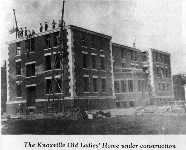 The foundation was laid in 1910 and the massive building took two years to finish. It contained three floors plus a basement. A 1912 newspaper article described the home as "fire-proof construction, being built of brick and cement with reinforced concrete floors and partitions of iron studding with metal lath, covered with three inches of solid plaster and is covered with green German tile roof."
The foundation was laid in 1910 and the massive building took two years to finish. It contained three floors plus a basement. A 1912 newspaper article described the home as "fire-proof construction, being built of brick and cement with reinforced concrete floors and partitions of iron studding with metal lath, covered with three inches of solid plaster and is covered with green German tile roof."
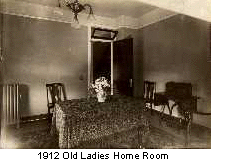
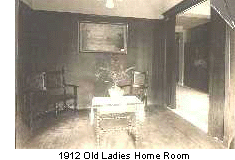
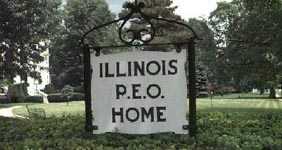 The PEO renovated the home before reopening it on May 3, 1953. At first there were three different plans for admission. Life Care was based on age and actuarial tables of insurance companies. Foundation residents paid $5,000 on entrance and $125 per month. Mutual Assistance residents paid what they could with state assistance. During the first decade, 44 women lived at the home.
The PEO renovated the home before reopening it on May 3, 1953. At first there were three different plans for admission. Life Care was based on age and actuarial tables of insurance companies. Foundation residents paid $5,000 on entrance and $125 per month. Mutual Assistance residents paid what they could with state assistance. During the first decade, 44 women lived at the home.
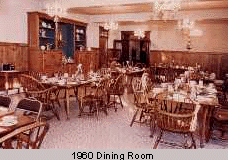
|
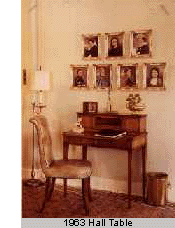
|
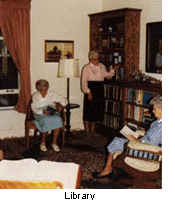
|
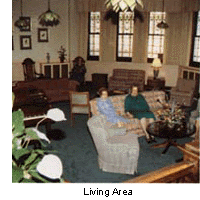
|
The PEO board filed a petition in Knox County Circuit Court to demolish the building in July 2001. A not-for-profit group called Concerned Citizens for the PEO Home formed to try to prevent demolition. The group wanted to obtain possession of the building and continue to try to find a use for it. The PEO board offered the City of Knoxville the building and the money it would cost to demolish the building.
In November, the City Council discussed forming a committee to look into uses for the building and the possibility of putting a referendum on the Spring ballot asking the voters if the city should accept the building. Although it was not on the agenda, at the next council meeting Ward 3 Ald. Gene Parrish made a motion to not accept the building. Ward 3 Ald. Larry Clevenger seconded the motion. Because it was not on the agenda, no one from the Concerned Citizens was at the meeting. Resident Everett Belote, a former Knoxville mayor and city administrator, was at the meeting and encouraged the council to vote on the issue. The vote was 5 - 2 in favor of not accepting the building. When supportors of saving the building attended the next council meeting, a motion to rescind the decision to reject the building died for lack of a second. When the president of the Concerned Citizens asked the PEO Board to give the building to the not-for-profit group, he was told to talk to the Illinois Attorney General.
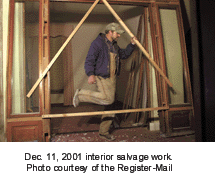
On Dec. 28, 2001, Judge Stephen Mathers ruled in favor of the PEO Home Fund and granted the petition to demolish the historic mansion.
The Concerned Citizens made one last effort in May 2002 to stop the demolition after learning a contractor from the Quad Cities, with a proven track record of restoring historic buildings and converting them into senior housing, expressed interest in obtaining the home. The Peo Home Fund would not consider the offer. The PEO Home Fund also turned down an offer of $200,000 for the building from a private citizen.
On June 4, 2002, demolition of the building began.
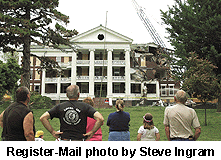
|

|

